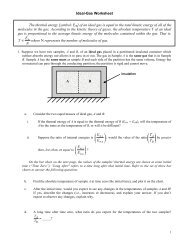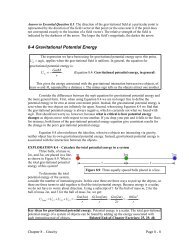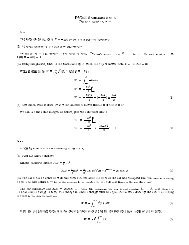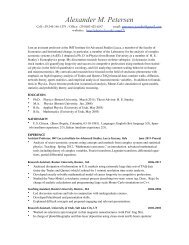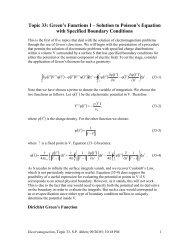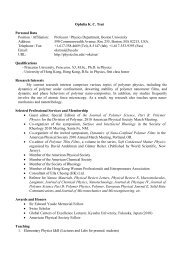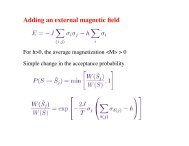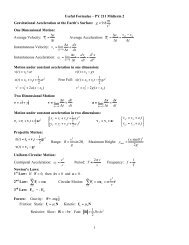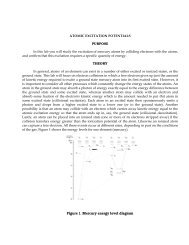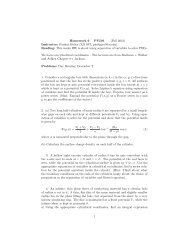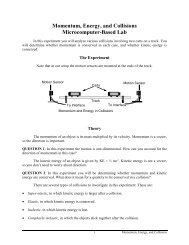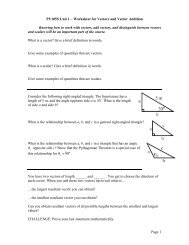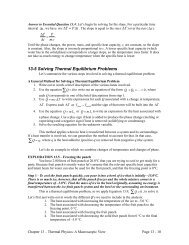Crystal Structure 1 3.1 Some Basic Concepts of Crystal Structure ...
Crystal Structure 1 3.1 Some Basic Concepts of Crystal Structure ...
Crystal Structure 1 3.1 Some Basic Concepts of Crystal Structure ...
You also want an ePaper? Increase the reach of your titles
YUMPU automatically turns print PDFs into web optimized ePapers that Google loves.
<strong>Crystal</strong> <strong>Structure</strong><br />
<strong>Basic</strong> <strong>Concepts</strong><br />
Wigner-Seitz primitive cell: It turns out one can always choose a primitive unit cell with<br />
the full symmetry <strong>of</strong> the Bravais lattice. The most popular choice is the Wigner-Seitz cell.<br />
By construction, there is only one Wigner-Seitz cell about a lattice point. To construct a<br />
Wigner-Seitz cell, one draws lines connecting one given lattice point to all its nearby<br />
points in the lattice, bisects each line with a plane, and takes the smallest polyhedron<br />
containing the point bounded by these planes. Fig. 3.5 illustrates the Wigner-Seitz cell <strong>of</strong><br />
a two-dimensional Bravais lattice. Figs. 3.6 and 3.7 illustrate the Wigner-Seitz cell for the<br />
bbc and fcc lattice, respectively.<br />
Fig. 3.5 (from (A&M) The Wigner-Seitz cell <strong>of</strong><br />
a two-dimensional Bravais lattice.<br />
Fig. 3.6 (from A&M) The Wigner-Seitz cell for<br />
the bcc Bravais lattice (a “truncated<br />
octahedron”). The surrounding cube is a<br />
conventional bcc cell with a lattice point at its<br />
center and on each vertex. The hexagonal faces<br />
bisect the lines joining the central point to the<br />
points on the vertices (drawn as solid lines).<br />
The square faces bisect the lines joining the<br />
central point to the central points in each <strong>of</strong> the<br />
six neighboring cubic cells (not drawn).<br />
Fig. 3.7 (from A&M) The Wigner-Seitz cell for<br />
the fcc Bravais lattice (a “rhombic<br />
dodecahedron”). The surrounding cube is not<br />
the conventional bcc cell <strong>of</strong> Fig. 3.4(a), but one<br />
in which lattice points are at the center <strong>of</strong> the<br />
cube and at the center <strong>of</strong> the 12 edges. Each <strong>of</strong><br />
the 12 faces (all identical in shape and size) is<br />
perpendicular to a line joining the central point<br />
to a point on the center <strong>of</strong> an edge.<br />
4



![arXiv:1303.7274v2 [physics.soc-ph] 27 Aug 2013 - Boston University ...](https://img.yumpu.com/51679664/1/190x245/arxiv13037274v2-physicssoc-ph-27-aug-2013-boston-university-.jpg?quality=85)
